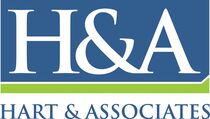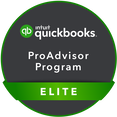|
With all the changes to the tax law affecting 2018 income tax, many of us may face a surprise next April 15 if we have not properly adjusted our payroll withholding amounts. Coming up on mid-year, check out this handy tax estimator tool to see if additional adjustments might be needed before year-end.
If you have questions on how best to plan ahead, please contact us by phone or schedule a complimentary consultation.
The information presented is of a general nature and should not be acted upon without further details and/or professional guidance. For assistance in identifying and utilizing all the tax deductions to which you are entitled, please contact your CPA or tax preparer.
Automate Your Emails
If you’re sending a lot of the same emails to clients, you may be able to add them to email list management software like Constant Contact or MailChimp. Then you can automate a series of emails using the autoresponder function. Another way to automate your emails is to set up inbox rules so that certain emails are automatically filed into the folders you’ve set up. For example, if you get a monthly email for a recurring bill payment, you could send it straight to your bills folder if you don’t want to read it. This will save time in the morning when you sort through the pile of email that’s sent overnight. Set a Timer Make a habit of checking your email only once or twice in the day. Plan those times on your calendar and set a timer to stop if you need to. This employs time batching, one of the most productive ideas in time management. It’s unproductive to stop and read each email exactly as it comes into your box, so setting times restructures the way you work with email for the better. Create Draft Email Answers for Your Ten Most Frequently Asked Questions Do you get a lot of the same questions over and over again in your email? Don’t start from scratch each time you craft an answer. Start with a draft of a previous answer, make it generic, and save it in your drafts folder. When you get that question again, copy and paste the draft and customize it as necessary. Repeat this for your top ten (or twenty) most-asked questions or emails that you send. You’ll shave minutes off each email reply from now on. Learn the Email Software You’re Using Sure, everyone pretty much knows how to send, reply to, and forward emails. Most even know how to add attachments. But what else do you know and use on a regular basis? If you are tech-savvy, then simply spend some time reviewing your email settings and functions. There may be some you discover that will make your day. If you don’t feel very comfortable with all things technical, then sign up for a formal course, preferably in person, where you have a real human teacher that can answer all your questions. It will be a day well spent. Set Up Folders Folders, labels, or categories in your email software are all good ways to segment email so that it can be processed in a particular order. Your folders might be by priority, client, service type, or something else. In any case, it’s easier on your brain to answer all questions from one client or topic at a time than it is to ping-pong back and forth. Use folders when you are complete with an email but want to save it for future reference. That way, your inbox will stay cleaner and emptier. Use the Search Function Using the search function liberally in your email software when you need to find an old email will help you save tons of time. Get a New Email Address if Your Current Email Address is Too Spammy You may be losing the spam battle with email addresses that have been used for more than a few years or that have been hacked. If so, the best solution might just be to switch to a new email. Choose a good email address in the first place by staying away from email addresses that hackers can guess, like [email protected], [email protected], or [email protected]. Instead use [email protected] or a version of your first and last names. Try these email productivity tips to help you spend less time on email while still getting the job done.
Revenue
The report starts by listing the revenue for the period of time covered. Revenue includes all sources of income, including sales from operations, interest and investment income, revenue from insurance claims, sales from assets or other parts of the business, and any other source of revenue. In most small businesses, sales will be the largest part of the revenue, if not all of it. In some countries, the term used for sales is turnover. If you sell more than one item or have more than one location, it might be a good idea to be able to view the sales detail from these categories. This may or may not be on your income statement depending on how formal it is, but you should be able to get a drill down report on your sales detail. Look for exceptions to what you expect to see. There can be some decisions you can make and actions you can take from the insights you discover. Cost of Goods Sold This section of the income statement includes costs you incur directly on items you sell. If you maintain an inventory, it’s the cost you paid for the inventory items that you sold during the period. If your business is a manufacturer, cost of goods sold, or COGS, will include costs of materials and labor to produce the items. If you own a service business, COGS will typically be zero. As a service business, you may incur direct costs when providing services, and these costs can be booked in a variety of expense accounts, including supplies. Gross Profit Some income statement formats will include a gross profit number which is sales minus cost of goods sold. This number is important for businesses with inventory. Expenses The expenses section of the income statement is the longest part. It includes all of the expenses you incurred in your business, including advertising and marketing, rent, telephone, and utilities, office supplies and meeting expenses, travel, meals, and entertainment, payroll and payroll taxes, and several more. You might also hear the term overhead. Overhead is a subset of expenses that have to be met whether you sell zero items or millions. They include items like rent and utilities, management payroll, and office supplies. To review your expenses, check line by line to see if anything looks out of sorts, and take the appropriate action. Net Profit or Loss The final number on your income statement represents whether you made or lost money in the period the report covers. The formula is simple: revenue less COGS less expenses equals net profit or loss. Net profit/loss can go by many names, depending on the size of your business and your accountant’s vernacular. You may also see EBITDA: Earnings before interest, taxes, depreciation, and amortization. Earnings is another word for net profit. Perspective It’s a good idea to compare your income statement numbers to other periods in your business. Common comparisons include last period, last several periods, and same period last year. It’s also a great idea to have a budget that sets goals for your income statement numbers. Then you can compare budget to actual numbers and take action on the variances. If your business falls into a standard type of business, you may also be able to see how it is doing compared to others in your industry. This is called benchmarking, and the income statement is a very common format that’s used in benchmarking. Do spend some time each period reviewing your business’s income statement. It can help you make a faster course correction in your business so you can be even more successful than you already are. Remember, though, that the Income Statement will only report based on the accuracy of data entered. For assistance with ensuring your books are accurate, please contact us. We offer many solutions to support business success through accurate financial reporting.
This is general information and should not be acted upon without first determining its application to your specific situation. Please contact your CPA or tax advisor for additional details.
When it comes to marketing, the company invoice might be the last thing you’d think about. But think again: it’s a great place to make every attempt to get paid faster and have your customer coming back for more services and products. Here are five fun easy-to-implement ideas to add to your invoices:
A simple “Thank you for your business” or a “We appreciate your business” is a nice added touch on the bottom of every invoice. QuickBooks invoices include a comment line where you can choose your comment or write one for yourself. You can also customize the form so that it appears on every invoice.
A customer that just purchased from you now trusts you; it’s the perfect time to let them know what else you have available that they could benefit from. Your offer could be a small amount off their invoice for referrals they send you, your monthly special, a sale item, or an item related to what they purchased. Just add a quick text line to your invoice letting them know the special and where to call for more information. If you haven’t ever tried this, you will be surprised and delighted at the results.
Most invoices include terms, but you can make it even easier on your client by computing their specific due date. If possible, include the due date on your invoice so the customer can see clearly when they need to pay you. Make the due date stand out, too. Bold it, print it in a different color, increase the font, or do all of the above. You want it to be really clear when that payment is due in your office.
Can you take payments online? If so, include the web link that customers can use to pay you online. If it’s convenient for your client to pay, you’ll get paid faster. (For a great QuickBooks integrated online payment option, please contact us.)
If all the above fails and the customer does not pay you by the invoice’s due date, you’ll want to have a process for re-sending the invoice and/or statement until the customer pays or until you’re ready to turn it over to a collections agency. Here are some sample sentences you can choose from:
When the invoice gets older, sometimes it helps to add a little humor:
Marketing to Get Paid With these five low-cost ideas, you’re “marketing” to get the payment sooner. They are easy to implement, cost very little, and will improve your cash flow. Try them and let us know how they are working.
This is general information and should not be acted upon without first determining its application to your specific situation. Please contact your CPA or tax advisor for additional details.
Income Taxes
Everyone knows about the April 15th deadline to file your taxes. Some people file an extension and have until October 15th. However, we need to remember that the best estimate of your tax liability needs to be paid by April 15th even if an extension is granted. Failure to correctly estimate and pay income taxes leads to a penalty that is calculated by multiplying the number of days the tax is late by the effective interest rate. Paying Vendors If we’re slow to make our accounts payable payments, our vendors may tack on a penalty, but the larger consequence is the effect on our credit score. A damaged credit score will create a ripple effect that impacts many other areas of your business. Business Goals It’s so easy to let internal deadlines slide, but they may be the most important of them all. To move your business forward, set goals with deadlines so that you can measure your results.
Mastering Deadlines
Here are a couple of tips to master your deadlines so you can avoid the above consequences:
If financial tracking or incomplete record keeping is impacting your ability to meet deadlines, give us a call. We can offer suggestions and recommendations for options to support your needs.
This is general information and should not be acted upon without first determining its application to your specific situation. Please contact your CPA or tax advisor for additional details.
With the passage of new tax laws starting with the 2018 tax year, how will you be impacted by changes? Get an overview of changes by watching this video.
The information presented is of a general nature and should not be acted upon without further details and/or professional guidance. For assistance in identifying and utilizing all the tax deductions to which you are entitled, please contact your CPA or tax preparer.
|
AuthorSuccessfully meeting the challenges inherent to new and smaller businesses provides me with a special type of satisfaction. Archives
February 2022
Categories
All
|







 RSS Feed
RSS Feed







